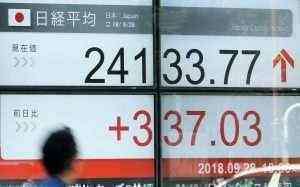
Beginning in 2024, those with principal loan balances of $12,000 or less can have remaining balances forgiven after just 10 years of payments on the SAVE plan. You’ll need to make payments for an additional year for every $1,000 you borrowed above $12,000 up to 20 or 25 years, depending on the degree. Once that doctor starts earning a higher salary, they may consider a different repayment plan, Williams says, but they’ve reaped the benefit of saving on extra interest while they were on the SAVE plan. They could, of course, remain on SAVE, but with annual income certifications, their payment will rise along with their salary. The Department of Education recently opened applications for the SAVE plan ahead of the expiration of the pandemic moratorium on payments and interest in September.
Commonwealth Bank earnings top $10 billion as interest rate rises boost profit margins – ABC News
Commonwealth Bank earnings top $10 billion as interest rate rises boost profit margins.
Posted: Tue, 08 Aug 2023 07:00:00 GMT [source]
The project is completed; however, during the time between the start of the project and its completion, the customer fails to fulfill their financial obligation. The Provision for Bad Debts directly impacts the financial statements of the company. IFRS and US GAAP have many subtle differences when accounting for provisions (loss contingencies) for legal claims. Using the historical data, it is possible to determine the rate at which debtors move into a worse delinquency category as time passes and then determine, using matrix multiplication, a loss rate for each delinquency category. Trade receivables and contract assets with no significant financing component. In contrast, under IFRS 9, the convertible bond is evaluated as a single unit of account.
Bad Debt Expense
No one should act upon such information without appropriate professional advice after a thorough examination of the particular situation. Improving business performance, turning risk and compliance into opportunities, developing strategies and enhancing value are at the core of what we do for leading organizations. The application of the SPPI criterion and business model assessment requires management judgment, and therefore new processes, controls and robust documentation rules of trial balance to support classification conclusions. For investments in debt instruments, IFRS 9 introduces a two-step analysis to determine which category is appropriate for their classification and measurement. A financial professional will offer guidance based on the information provided and offer a no-obligation call to better understand your situation. Someone on our team will connect you with a financial professional in our network holding the correct designation and expertise.
The net realizable value of the outstanding accounts receivable by deducting bad debt provisions from the gross accounts receivable. Two primary methods exist for estimating the dollar amount of accounts receivables not expected to be collected. Bad debt expense can be estimated using statistical modeling such as default probability to determine its expected losses to delinquent and bad debt. The statistical calculations can utilize historical data from the business as well as from the industry as a whole. The specific percentage will typically increase as the age of the receivable increases, to reflect increasing default risk and decreasing collectibility. Debit The provision for the bad debt is an expense for the business and a charge is made to the income statements through the bad debt expense account.
What Is Bad Debt in Accounting?
In this sense, bad debt is in contrast to good debt, which an individual or company takes out to help generate income or increase their overall net worth. In either case, bad debt represents a reduction in net income, so in many ways, bad debt has characteristics of both an expense and a loss account. While it’s important for business professionals to understand bad debt provision in general, it’s an especially timely topic as the world fights the COVID-19 pandemic and numerous natural disasters.
- The direct write-off method involves writing off a bad debt expense directly against the corresponding receivable account.
- In contrast, under IFRS 9, the convertible bond is evaluated as a single unit of account.
- Companies should estimate a total amount of bad debt at the beginning of every year to help them budget for that year and account for non-collectible receivables.
In accrual-basis accounting, recording the allowance for doubtful accounts at the same time as the sale improves the accuracy of financial reports. The projected bad debt expense is properly matched against the related sale, thereby providing a more accurate view of revenue and expenses for a specific period of time. In addition, this accounting process prevents the large swings in operating results when uncollectible accounts are written off directly as bad debt expenses. Alternatively, a bad debt expense can be estimated by taking a percentage of net sales, based on the company’s historical experience with bad debt. Companies regularly make changes to the allowance for credit losses entry, so that they correspond with the current statistical modeling allowances. The definition for the provision for bad debts, or otherwise known as doubtful debts, is the estimated amount of bad debt that will arise from the trade receivables not yet collected.
Do you already work with a financial advisor?
This approach may seem similar to how many corporates historically measured their bad debt provisions. So, it can be seen that bad debt provisions can substantially impact a company’s financials as it directly influences the profit in the income statement. Bad debt is an inherent risk for many industries, so they must factor in the provisions for bad debt while preparing their financial budget. There are instances where companies assume that a certain percentage of their sales would become doubtful debt and subtract that amount from their revenue.
- Double Entry Bookkeeping is here to provide you with free online information to help you learn and understand bookkeeping and introductory accounting.
- Using the direct write-off method, uncollectible accounts are written off directly to expense as they become uncollectible.
- Using the historical data, it is possible to determine the rate at which debtors move into a worse delinquency category as time passes and then determine, using matrix multiplication, a loss rate for each delinquency category.
- The specific allowance may be calculated as a percentage of the total rather than the whole amount, depending on the risk analysis.
- The net realizable value of the outstanding accounts receivable by deducting bad debt provisions from the gross accounts receivable.
However, the U.S. accounting textbooks are more likely to use Bad Debts Expense or Uncollectible Accounts Expense to describe the amount reported on the income statement. Debtors should be written off when it can be reasonably assured that the debtor will not pay the sum owed. The provision for bad debts should include an allowance for uncollectable debts and any net credit balances in these allowance accounts https://online-accounting.net/ at year-end should be charged to bad debts expense. When an account is written off, the debit balance in the allowance account for uncollectable debts should be debited and a corresponding credit entry made to bad debts expense. However, the direct write-off method can result in misstating the income between reporting periods if the bad debt journal entry occurred in a different period from the sales entry.
Popular Double Entry Bookkeeping Examples
There is no allowance, and only one entry needs to be posted for the entry receivable to be written off. You would have to earn about $65,000 or less to see that same monthly payment or lower on the SAVE plan. Depending on your repayment goals and income, you might be better off sticking to the standard repayment plan or another income-driven plan. The Federal Student Aid website has a loan simulator tool that lets you compare all the available repayment options and helps you choose the best one for your specific situation. Bad debt usually refers to an account that has ceased to earn income for a company because of late payments or non-payments, and doubtful debt is more severe and relates to accounts that may never be collected. For example, the bad debt insurance cost for a company with an annual turnover of €10 million in a low-risk market (such as an European Union country) will be around €1,500 a month for a standard trade credit insurance policy.
Payday Loans Near Me: Get Quick Cash Advances With Bad Credit … – WISH TV Indianapolis, IN
Payday Loans Near Me: Get Quick Cash Advances With Bad Credit ….
Posted: Wed, 06 Sep 2023 18:27:28 GMT [source]
That’s defined as the difference between your adjusted gross income and 225% of the federal poverty line, which is about $32,800 a year for individuals in 2023. And beginning next summer, that payment will be cut in half, as the cap will drop to 5% of your discretionary income. When facing late invoice payment, how do you maintain a good relationship with customers? Generally, the premium for your bad debt insurance is calculated depending on your sector of activity and your turnover. When you add on the time and money you will spend trying to collect a debt, it becomes clear that overdue debts cost more than the face value of the bill.
Recognizing bad debts leads to an offsetting reduction to accounts receivable on the balance sheet—though businesses retain the right to collect funds should the circumstances change. A bad debt expense is recognized when a receivable is no longer collectible because a customer is unable to fulfill their obligation to pay an outstanding debt due to bankruptcy or other financial problems. Companies that extend credit to their customers report bad debts as an allowance for doubtful accounts on the balance sheet, which is also known as a provision for credit losses. In contrast to the direct write-off method, the allowance method is only an estimation of money that won’t be collected and is based on the entire accounts receivable account. The amount of money written off with the allowance method is estimated through the accounts receivable aging method or the percentage of sales method. The provision for bad debts creates a contra account (an asset account with a credit balance), which is then listed in the balance sheet and placed just below the accounts receivable.

Because you can’t be sure which loans, or what percentage of a loan, will translate into bad debt, the accounting method for recording bad debt starts with an estimate. Under the direct write-off method, bad debt expense serves as a direct loss from uncollectibles, which ultimately goes against revenues, lowering your net income. For example, in one accounting period, a company can experience large increases in their receivables account.